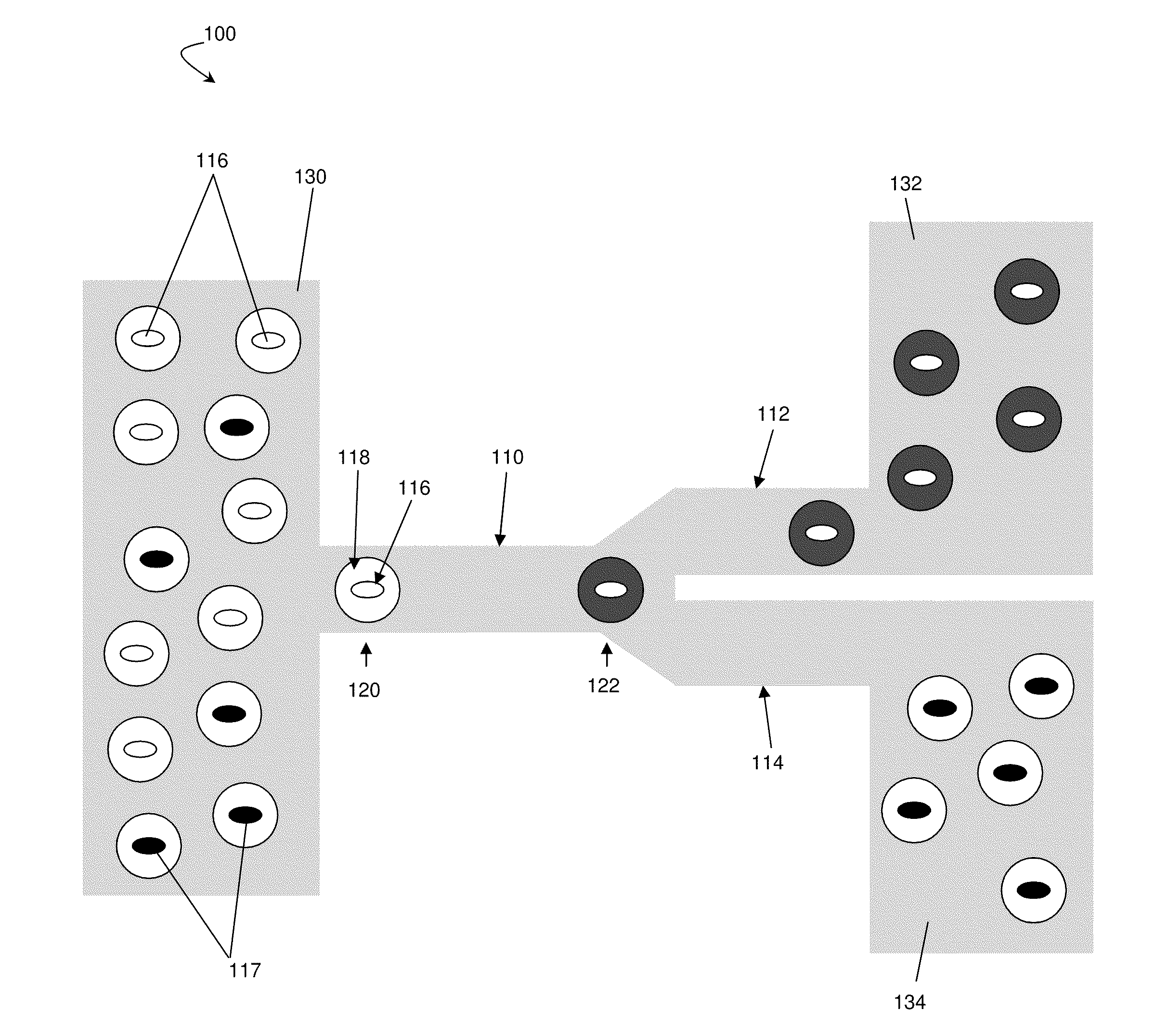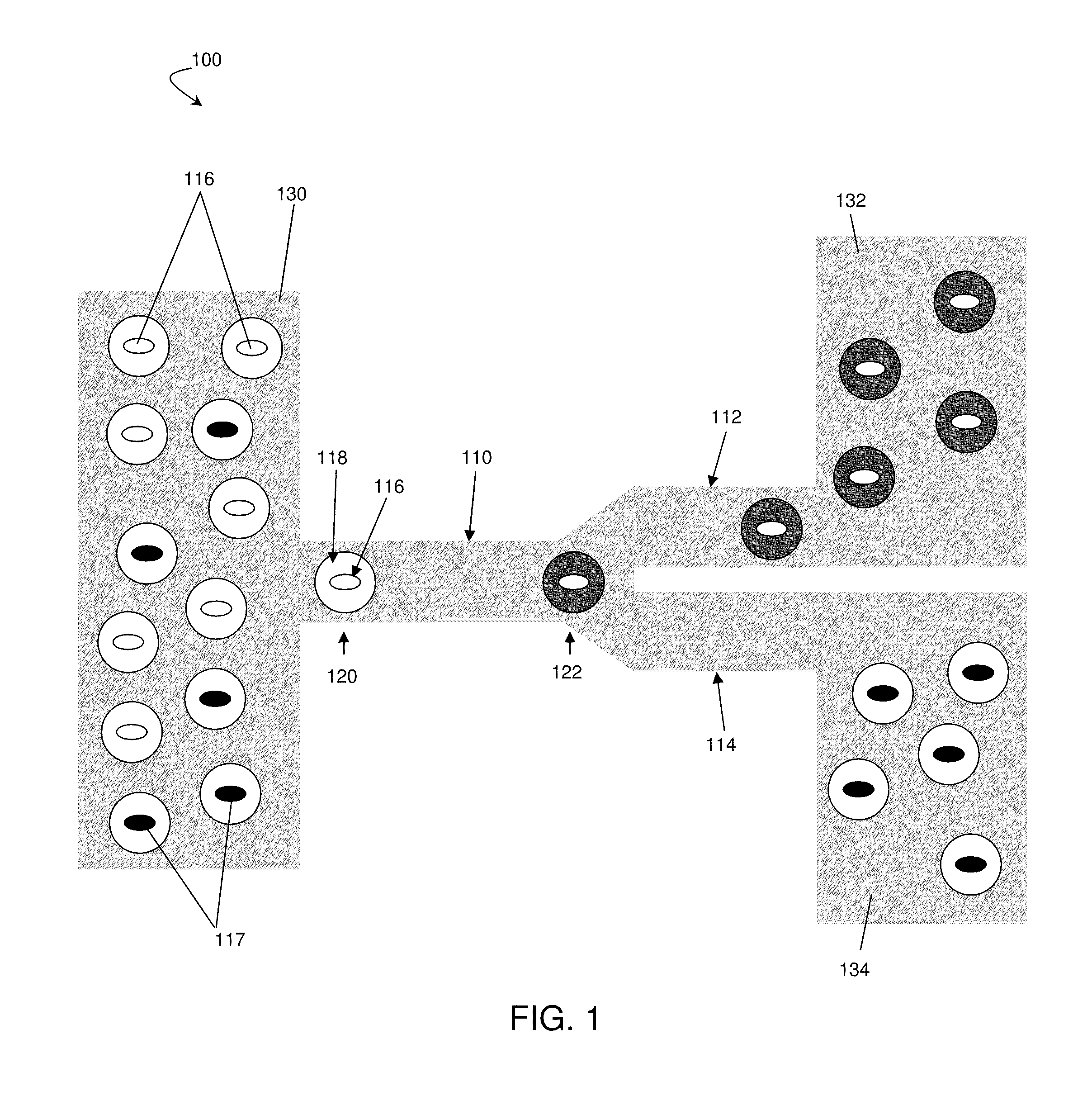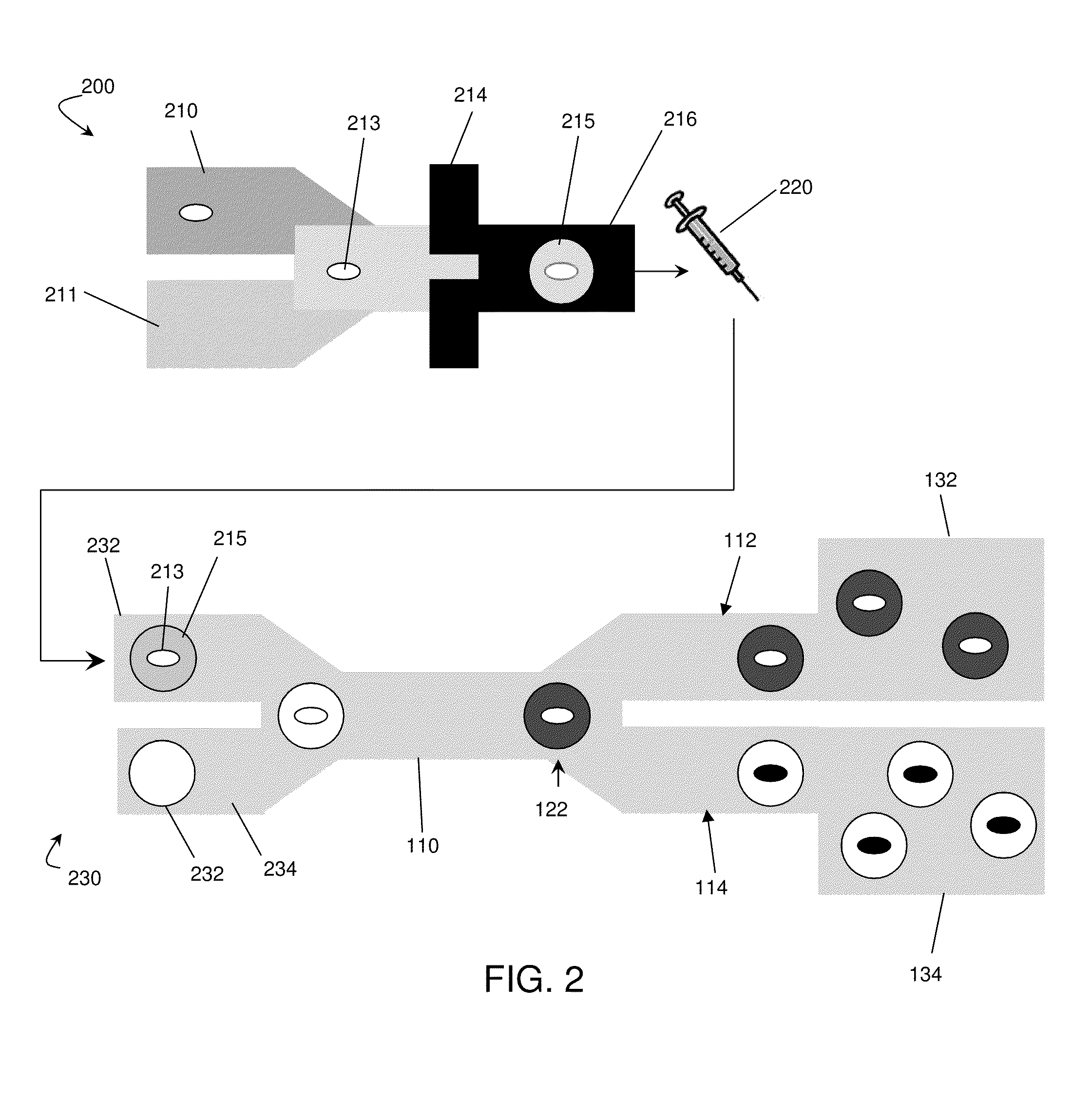Microfluidic droplets for metabolic engineering and other applications
a technology of metabolic engineering and droplets, applied in the field of microfluidic droplets for metabolic engineering and other applications, can solve problems such as insufficient throughpu
- Summary
- Abstract
- Description
- Claims
- Application Information
AI Technical Summary
Benefits of technology
Problems solved by technology
Method used
Image
Examples
example 1
[0084]This example describes a high-throughput screening platform which utilizes microfluidics to encapsulate yeast cells in nanoliter aqueous droplets surrounded by an immiscible fluorinated oil phase. The system described in this example contained modules for cell culturing, measurement of the metabolite of interest with a fluorescent enzymatic assay, and sorting. In this example, a population of high xylose-consuming cells was enriched by over 21 times from a mixture of two Saccharomyces cerevisiae (yeast) strains. This systems and methods described in this example can be expanded to apply more generally to select for strains from libraries for metabolic engineering applications. Any fluorescent assay system can be used in this example. Furthermore, the enzymes described here (e.g., horseradish peroxidase / Amplex UltraRed) are by way of example only and other enzymes, such as other oxidase enzymes which exist in nature, can be used as well.
[0085]This example involves the consumpti...
example 2
[0112]In this example, the nature of the genetic modification(s) underlying the superior xylose uptake performance that some strains acquired as a result of the evolution was investigated. The H131-A31 strain, used in this example, was similar to H131 with the exception of one important difference: instead of the XYL1 and XYL2 genes, H131-A31 contained the Piromyces sp. E2 XYLA gene encoding a xylose isomerase enzyme to convert D-xylose to D-xylulose. This strain initially exhibited negligible growth and xylose consumption rates. After evolving it over a period of several months through growth and serial subculturing, strain H131E-A31 was obtained that was characterized by high growth (μ˜0.2 hr−1) and high xylose consumption rates (14 g / L in 2 days).
[0113]To identify the genetic elements responsible for the improved performance of the H131E-A31 strain, a genomic library of this strain was constructed and transformed into H131-A31. H131-A31 is similar to H131 except its genotype is M...
example 3
[0119]This example describes a method for identifying high ethanol producing strains of S. cerevisiae by identifying high glucose consuming strains. Glucose consumption and ethanol production are correlated. For example, ATCC 24858 is capable of reducing the concentration of glucose from about 4.6 g / L to about 4.2 g / L after 3 hours, about 3.3 g / L after 5 hours, about 2 g / L after 7 hours, and about 0.5 g / L after 9 hours. At the same time, the ethanol concentration rises to about 0.06% after 5 hours, about 0.18% after 7 hours, and about 0.25% after 9 hours. ATCC 24858 consumes more glucose and also produces more ethanol while the adh1 knockout strain (adh1 KO) consumes very little glucose and produces negligible amounts of ethanol. PDC1-GFP is a medium producing and consuming strain. Thus, the assumption of using an indirect measurement of selection is valid. In this example, Amplex UltraRed is used to detect glucose oxidase to perform the screen.
[0120]The three strains used in this e...
PUM
 Login to View More
Login to View More Abstract
Description
Claims
Application Information
 Login to View More
Login to View More - R&D
- Intellectual Property
- Life Sciences
- Materials
- Tech Scout
- Unparalleled Data Quality
- Higher Quality Content
- 60% Fewer Hallucinations
Browse by: Latest US Patents, China's latest patents, Technical Efficacy Thesaurus, Application Domain, Technology Topic, Popular Technical Reports.
© 2025 PatSnap. All rights reserved.Legal|Privacy policy|Modern Slavery Act Transparency Statement|Sitemap|About US| Contact US: help@patsnap.com



